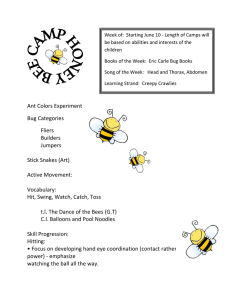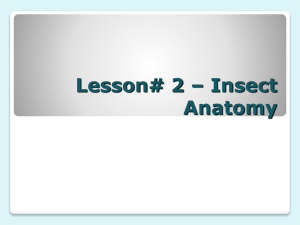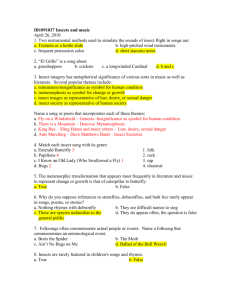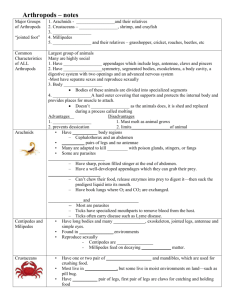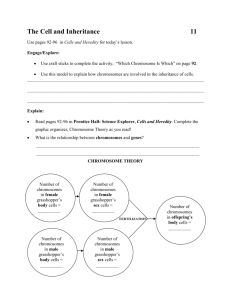Dominant Fly Lab
advertisement
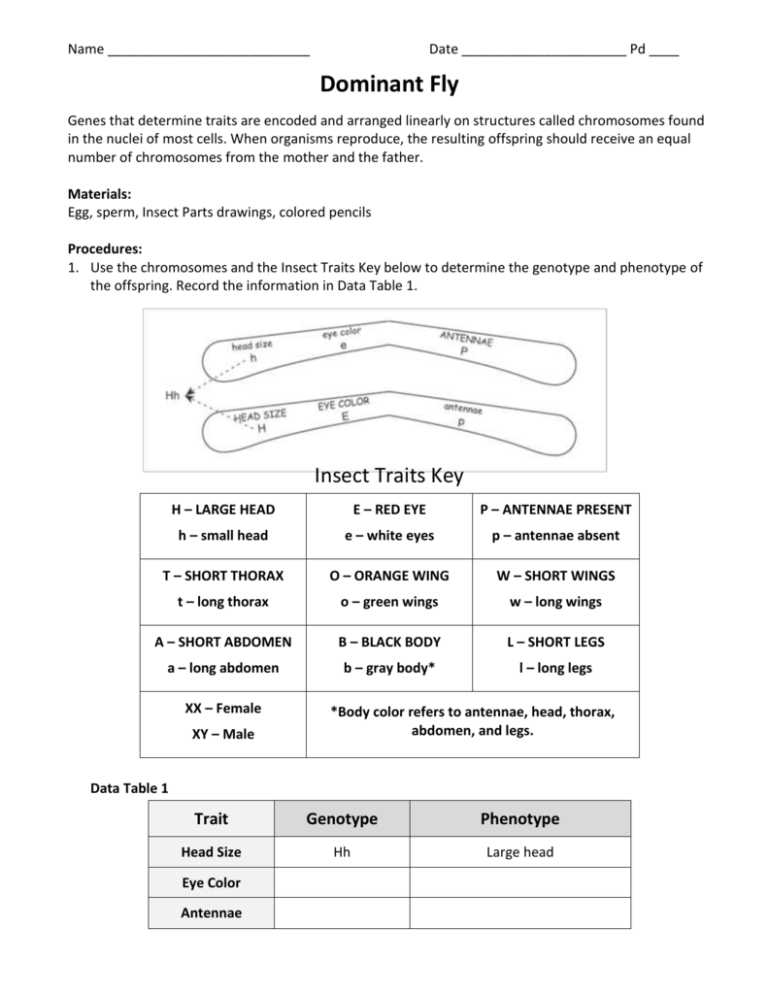
Name ___________________________ Date ______________________ Pd ____ Dominant Fly Genes that determine traits are encoded and arranged linearly on structures called chromosomes found in the nuclei of most cells. When organisms reproduce, the resulting offspring should receive an equal number of chromosomes from the mother and the father. Materials: Egg, sperm, Insect Parts drawings, colored pencils Procedures: 1. Use the chromosomes and the Insect Traits Key below to determine the genotype and phenotype of the offspring. Record the information in Data Table 1. Insect Traits Key H – LARGE HEAD E – RED EYE P – ANTENNAE PRESENT h – small head e – white eyes p – antennae absent T – SHORT THORAX O – ORANGE WING W – SHORT WINGS t – long thorax o – green wings w – long wings A – SHORT ABDOMEN B – BLACK BODY L – SHORT LEGS a – long abdomen b – gray body* l – long legs XX – Female XY – Male *Body color refers to antennae, head, thorax, abdomen, and legs. Data Table 1 Trait Genotype Phenotype Head Size Hh Large head Eye Color Antennae 2. Open the egg and sperm and examine the chromosomes. Pair up the chromosomes by matching the traits on them. Use the information on the chromosomes and in the Insect Traits Key to complete Data Table 2. Data Table 2 Trait Homozygous or Genotype Heterozygous Dominant or Recessive Phenotype Head size Chromosome Pair 1 Eye color Antennae Thorax size Chromosome Pair 2 Wing color Wing length Leg length Chromosome Pair 3 Body color* Abdomen size Chromosome Pair 4 Sex Hemizygous Not Applicable * Body color refers to antennae, head, thorax, abdomen, and legs. Insect Parts Now that you have the phenotype of your offspring, draw the fly by tracing and then coloring the correct Insect Parts in the box on the next page. Insect Parts Now that you have the phenotype of your offspring, draw the fly by tracing and then coloring the correct Insect Parts in the box below. Insect Parts Use the following insect parts to trace your infant offspring. Antennae Abdomen Abdomen Thorax Thorax
